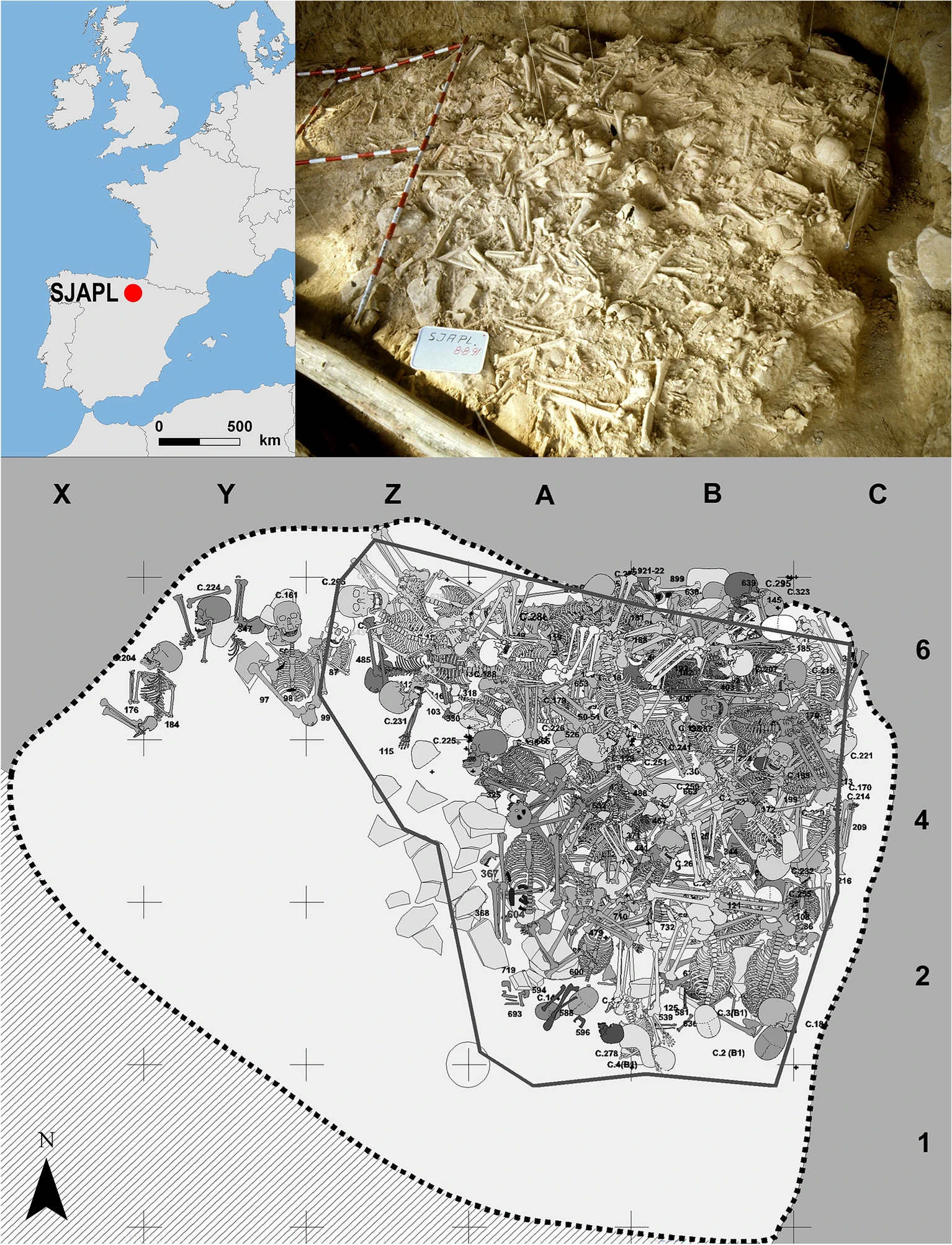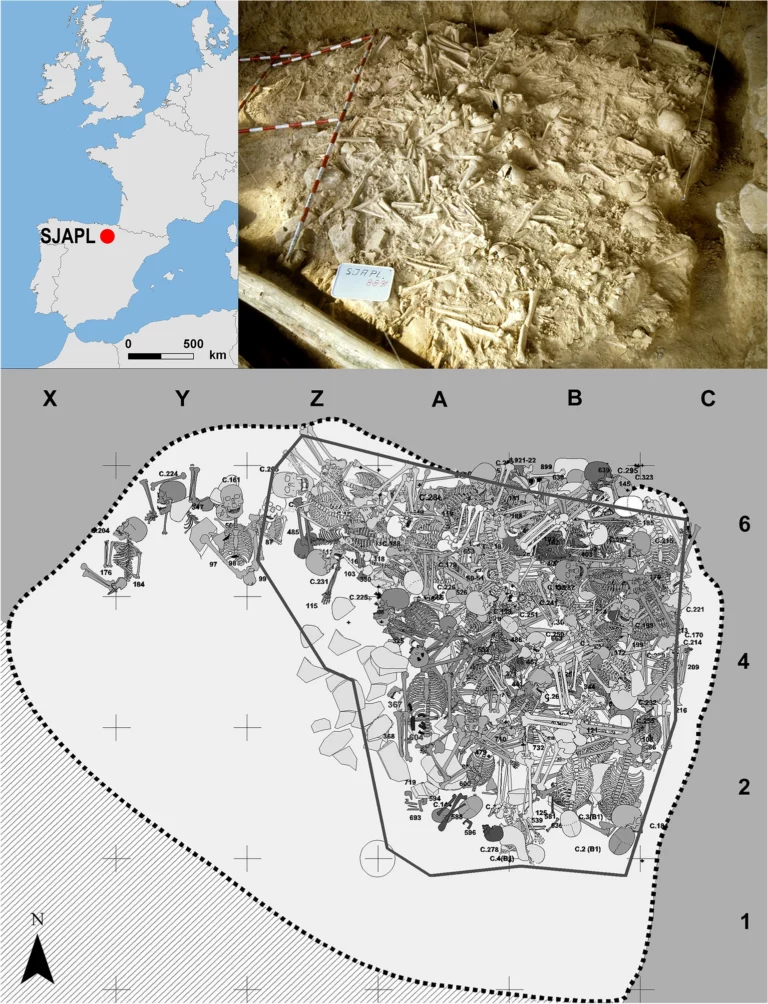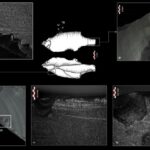Archaeology: Larger-scale warfare may have occurred in Neolithic Europe, 1,000 years earlier
The mass burial site of San Juan ante Portam Latinam, in the Rioja Alavesa region of northern Spain, may offer proof of larger-scale warfare occurring in Neolithic Europe, 1,000 years earlier than previously understood

A re-analysis of more than 300 sets of 5,000-year-old skeletal remains excavated from a site in Spain suggests that many of the individuals may have been casualties of the earliest period of warfare in Europe, occurring over 1,000 years before the previous earliest known larger-scale conflict in the region. The study, published in Scientific Reports, indicates that both the number of injured individuals and the disproportionately high percentage of males affected suggest that the injuries resulted from a period of conflict, potentially lasting at least months.
Conflict during the European Neolithic period (approximately 9,000 to 4,000 years ago) remains poorly understood. Previous research has suggested that conflicts consisted of short raids lasting no more than a few days and involving small groups of up to 20–30 individuals, and it was therefore assumed that early societies lacked the logistical capabilities to support longer, larger-scale conflicts. The earliest such conflict in Europe was previously thought to have occurred during the Bronze Age (approximately 4,000 to 2,800 years ago).
Teresa Fernández‑Crespo and colleagues re-examined the skeletal remains of 338 individuals for evidence of healed and unhealed injuries. All the remains were from a single mass burial site in a shallow cave named San Juan ante Portam Latinam, in the Rioja Alavesa region of northern Spain, radiocarbon dated to between 5,400 and 5,000 years ago. 52 flint arrowheads had also been discovered at the same site, with previous research finding that 36 of these had minor damage associated with hitting a target. The authors found that 23.1% of the individuals had skeletal injuries, with 10.1% having unhealed injuries, substantially higher than estimated injury rates for the time (7–17% and 2–5%, respectively). They also found that 74.1% of the unhealed injuries and 70.0% of the healed injuries had occurred in adolescent or adult males, a significantly higher rate than in females, and a difference not seen in other European Neolithic mass-fatality sites.
The overall injury rate, the higher injury rate for males, and the previously observed damage to the arrowheads suggest that many of the individuals at the burial site were exposed to violence and may have been casualties of conflict. The relatively high rate of healed injuries suggests that the conflict continued over several months, according to the authors. The reasons for the conflict are unclear, but the authors speculate on several possible causes, including tension between different cultural groups in the region during the Late Neolithic.
Bibliographic information:
Fernández-Crespo, T., Ordoño, J., Etxeberria, F. et al., Large-scale violence in Late Neolithic Western Europe based on expanded skeletal evidence from San Juan ante Portam Latinam, Scientific Reports (2-Nov-2023), DOI: 10.1038/s41598-023-43026-9
Press release from Scientific Reports.



